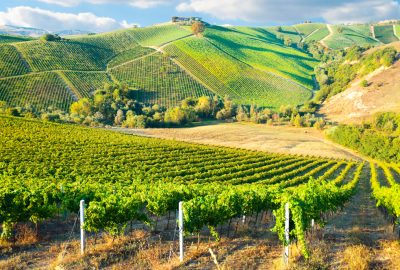I bet you’ve seen Bordeaux written on dozens of bottles. It’s synonymous with some of the best wines and worst hangovers. I am no stranger to the intricacies of winemaking. In fact, I do have a makeshift fermentation operation in my garage. Almost anything sweet can be turned into booze. The magic happens when yeast feeds on sugar and “poops” alcohol. That’s why any kind of fruit works; berries, apples, pineapple, you name it. So why grapes? What makes them so special that grape wine became so mainstream? It’s hard to screw up, fool proof. Grapes are naturally sweet and have a layer of yeast on their skin. Just mash them and they’re good to go. It’s so easy that the Chinese supposedly figured it all out around 3000 BC. However, it’s the French that turned it into an art form and Bordeaux has always been the centre of it all. There are around 6000 vineyards and wineries split between two banks of the Garonne river. The wines they make differ depending on the vinery, but all share similar notes. They might use specific ratios of grapes, but all their labels say “Bordeaux”. The climate here is warm and allows for the fruit to ripen to perfection. The soil is also ideal for growing vines.
That soil also affects Bordeaux in another way: it’s too soft to build anything too tall on it. That means no skyscrapers or high-rise apartment buildings. The city is wide and flat like a pancake and packed with stuff to do. Wine isn’t the only thing that makes Bordeaux one of the major European destinations. It has historically been a very prosperous port town. Most of its inhabitants were merchants and freethinkers. Modern Bordeaux is similar. Young people are taking matters into their own hands transforming the city into something unique. An elaborate restoration plan to upscale certain unsightly areas is delivering amazing results. Bassins de Lumiere are an example of that. It’s an abandoned submarine base turned into a digital art gallery. Their Gustav Klimt exhibition is unforgettable. The Bastide Neighborhood is another abandoned military base. The area used to operate as barracks. Now it’s repurposed as a cultural centre and the bohemian district of Bordeaux with skate parks, urban art galleries, and drinks in mason jars.
Those are all “off the beaten path”; the main landmarks can be found along the river. The crescent-shaped bend of the Garonne is where the magic happens. Cité du Vin is located at the northern part of the bend. It’s the largest wine museum in the world. They call it an interactive museum but don’t go in thinking it’s a wine bar. You’ll find those everywhere else, especially along the renovated riverbanks. The iconic Place de la Bourse is further south towards the downtown. It’s the most recognizable and timeless square in Bordeaux. You’ll see some outstanding architecture from the late 1700s if you’re into that stuff. For me, the fountain is the centrepiece of that plaza. The Water Mirror (Miroir d'eau) is technically a “reflecting pool”- slabs of granite covered by a thin layer of water. The best part is that it releases a refreshing mist every few minutes, which is a great treat during hot summer days. I think that every city should have its own Miroir d'eau.

The magnificent Miroir d'eau (Water Mirror) in Bordeaux is the world's largest reflecting pool, beautifully located along the quays of the Garonne river and in front of Place de la Bourse
The Garonne riverbanks are also the best spot for food and nightlife. The world’s capital of wine needs adequate gastronomy to go with it. Thirty-two local restaurants are featured in the Michelin Guide, which is no small feat. Keep in mind that most of it is French fine dining and it’s not everyone’s cup of tea. The British have ruled Bordeaux for over 300 years. You’ll have no trouble finding a pub with decent fast food and beer either. The Brits haven’t left much else behind when they left, but you will see a lot of ancient Aquitaine history around. They’re the prehistoric people who lived on these lands long before the Celts or the Romans. You can learn about all that seemingly forgotten culture at the Museum of Aquitaine (Musée d'Aquitaine). Showcased artefacts include the Venus with Horn which is an over 25 000 years old sculpture. All those ancient “Venus” art makes me think about how the standards of beauty have changed over the centuries.




No one commented yet. Be the first.